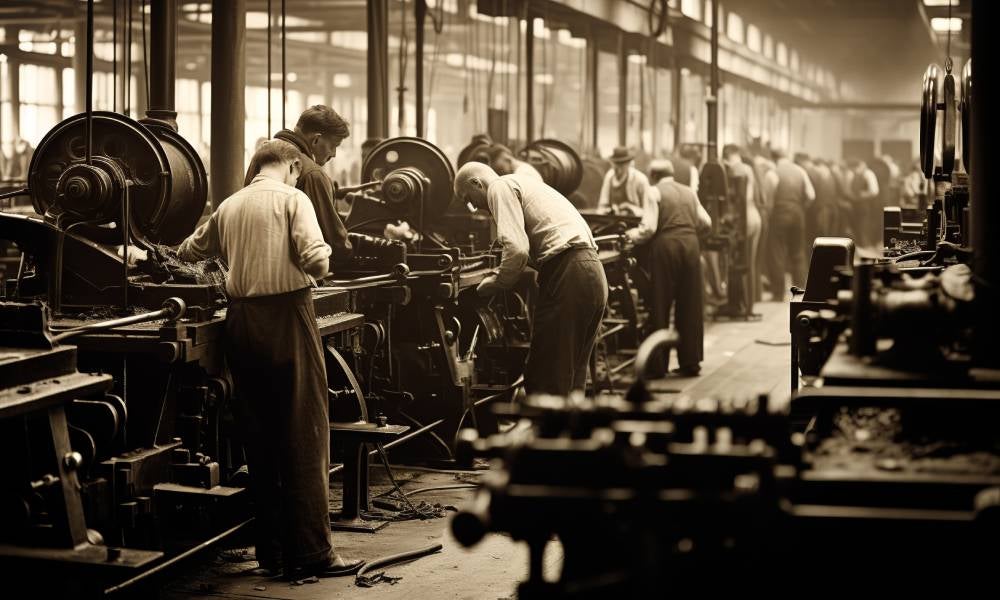How to manage psychosocial hazards in the workplace
While it can be easy to overlook the subtle connection between power dynamics and mental health in the workplace, this link is crucial to minimising psychosocial hazards
In the last ten years, Australian workers have been reporting an increased number of mental health issues. For example, around 15 per cent of workers aged 18-34 reported high levels of psychological distress in 2017, which doubled to more than 30 per cent during the COVID-19 pandemic. The most common reasons for work-related mental stress are work pressure (31 per cent), work-related harassment and bullying (27 per cent) and workplace violence (14 per cent). According to Safework Australia, work-related psychological injuries have longer recovery times, higher costs, and require more time away from work. Managing the risks associated with psychosocial hazards protects workers and minimises costs and disruption associated with staff turnover and absenteeism and can improve productivity.
To address the rise in reported mental health strains at work, Australia has adopted specific regulations requiring employers to address psychosocial hazards in addition to requirements under the general duty provision. With greater fluency amongst employers and workers about these hazards and increased safety regulator activity and prosecutions, organisations and their leaders must understand the risks and how to mitigate them.
The heightened interest and recognition of psychological hazards at work results from the changing nature of work and societal shifts over the past two decades, says Michael Quinlan, Emeritus Professor in the School of Management & Governance at UNSW Business School. In his paper, Psychosocial hazards: An overview and industrial relations perspective, Professor Quinlan challenges some common misconceptions about mental health risks in the workplace and proposes how to address them, emphasising the roles of HR, senior leaders, and improved work organisation. However, he also says that understanding the power dynamics within management teams is crucial in minimising the prevalence of workplace psychosocial hazards.

He explains: “There are some fundamental policy questions that we need to ask about what works should be shaped like, and what the role of societies is in giving their citizens both individual and collective rights. For example, a female contract cleaner from a migrant background might have individual rights to make a complaint to their employer.
“But then you ask them a real question: how likely is she to do that? And what are the consequences when she does it? And the evidence is that people are frightened to do it because they know it won't end well.”
What are psychosocial hazards in the workplace?
According to Professor Quinlan, psychosocial hazards are the adverse social and psychological conditions that impact workers' health, safety, and wellbeing, encompassing mental and physical aspects. Post-COVID-19, the all too familiar stressors such as burnout and overload, influenced by downsizing and job insecurity, fall under these hazards. Different factors, such as work characteristics (job content, workload, environment) and those linked to the social and organisational context (relationships, aggression, career mobility, union presence), all play a role.
But other factors, like the impact of unions, need more research attention, particularly in industrial relations, says Professor Quinlan. Indeed, presenting at the Industrial Relations Academics Association of Australia and New Zealand symposium on psychosocial hazards a few years ago, Professor Quinlan was asked to give a keynote, which inspired him to take a closer look at the factors that lead to psychosocial hazards at work.
Read more: Why boards need to take action on power-hungry leaders
“The major focus of my research has been on work organisation and how work organisation affects occupational health and safety. And that includes mental health effects of going back about 20 or more years, looking at violence, bullying, harassment, but more than that, looking at the impact of downsizing and job insecurity,” he says.
“So, I thought it was an opportunity to bring all the material on psychosocial hazards together, put it in historical context, evaluate the competing theories or explanations, and then particularly look at it from an industrial relations perspective. Because a lot of the literature on psychosocial hazards is too narrowly focused. I wanted to write something as a sort of antidote to that. And I was very unhappy with the dominant model being used. So, there's a huge body of literature emerging in this area. But much of it generates more heat than light.”
Importantly, he says psychosocial hazards are not a new phenomenon. “There's very good evidence in the 19th century that they're widespread spread across many occupations," he explains. "And there's no neat division between those conditions at work, which give rise to psychosocial hazards. They usually give rise to psychosocial and physical hazards simultaneously.”

Understanding psychosocial hazards at work: a multi-model approach
In his paper, Professor Quinlan explores the complex landscape of psychological hazards in the workplace and challenges prevalent models like the Job Demands Resources (JDR) model, which is the most popular with researchers, although there are others that are better in explaining the origins of psychosocial hazards. He says the Effort-Reward-Imbalance (ERI) model and the Pressure-Disorganisation and Regulatory Failure (PDR) model provide a more compelling understanding of the root causes, which need to be more closely aligned with industrial relations and modern business and organisational dynamics, including a deeper understanding of the impact of hierarchies and power dynamics.
“I set out to examine five models that have been developed to try and explain how work affects people's mental and physical health and then critically evaluate those, but also point out some of the ways that industrial relations could contribute to the field,” he says.
Professor Quinlan emphasises the potential to draw on the strengths and weaknesses of existing models to develop better models over time to enhance interventions and protect employees' mental well-being in the workplace. The JDR model, for example, is in my view, weak on contextual, institutional (like industrial relations) and regulatory factors. Other models, like the demand-control and effort-reward models, offer a more structural perspective on the underlying causes of workplace stress but also omit the role of regulation in shaping workplace relations.
Read more: Where organisations go wrong in managing psychosocial hazards
Adopting an industrial relations perspective, the proposed new model suggests integrating broader social factors, such as regulation and union presence, to better understand and address psychosocial hazards. It advocates for incorporating the significance of corporate responsibility and proactive wellbeing programs, promoting advanced models to tackle psychological hazards and foster a healthier workforce. Professor Quinlan also highlights the importance of shifting organisational power dynamics by involving workers in decision-making for healthier workplaces, especially avenues for collective representation.
Specifically, he explains that this new model would encompass economic-reward pressures, worker engagement/control/representation, disorganisation, regulatory failure, and family circumstances. Developing or combining existing models is a worthwhile task for Industrial Relations scholars, offering a valuable contribution to researchers in other fields studying psychosocial hazards.
“If we're going to make work that is both productive and healthier and safer into the future, we need to do that by involving workers meaningfully in decision-making processes about their work. And we can't rely on leaders, corporate chiefs, executives, or consulting firms to make those decisions. Because the record is they do it very badly. And they do it for a set of interests, their own set of interests, but not that of the great workforce. And that's the reason I think we're finding psychosocial hazards are becoming such an issue,” he says.

“People, in many respects, are not as physically threatened by the workplace as they were 100 years ago. The chances of you being killed are still there, but your chances of being killed by a traumatic event are less. But you and these psychosocial hazards existed back in the early period. They weren't. They were there, too, but you have fewer physical chances of being hurt today. I'm at work with one huge caveat: that psychosocially distressing work. There's very good evidence that sort of work also doesn't just make you feel mentally unwell. It also affects your cardiovascular health and things like that as well.”
Navigating power dynamics: solutions to manage psychosocial hazards
Professor Quinlan says it is feasible to establish workplaces prioritising health and safety while sustaining high productivity. The emphasis is placed on the significance of organisational culture, effective management, and proactive approaches to health and safety. Regarding corporate culture, he notes its reflection of values and decisions set by senior management. Yet, a potential discrepancy exists between management's intended culture and the actual perceptions at the workplace level.
“The best managers are problem solvers. They listen and see their tasks as solving problems and getting the best feedback from all sources, including critical feedback. The danger with a hierarchy is that you are always told what people think you want to know. And you don't get told things you don't want to know, which is why dictatorships are so dangerous.
“So, any concentration of power comes with that risk. Good managers and management teams will spend a lot of time ensuring they have feedback loops, which tell them everything, including the problems and the things that are uncomfortable but essential. And they react to them,” he says.
Subscribe to BusinessThink for the latest research, analysis and insights from UNSW Business School
“We need to have a broader social discourse, where the health and wellbeing of the community isn't just a bit of rhetoric and that we do make economic decisions informed by an awareness of the health and safety consequences and not just say, well, health, and we make economic decisions, and then we try and work out the health and safety consequences later. That's never going to end well.”
So, what practical steps can organisations take today? “They can find out what matters to their workforce, through surveys and engagement with the union unions, and if there are issues about the design of work or work tasks in a workplace… they can feed that information back to senior management.
“Senior management may not want to do anything about that. But otherwise, nothing will happen.”
Michael Quinlan is an Emeritus Professor in the School of Management & Governance at UNSW Business School and Director of the Industrial Relations Research Centre. His major expertise is the field of occupational health and safety (OHS) and risk, particularly aspects related to work organisation, management and regulation.
In response to the new regulation and growing demand for training in this area, the UNSW Lifelong Learning Hub is launching a new short course Managing Psychosocial Risks at Work: a self-paced online course, designed to help organisations meet their legal obligations in identifying and controlling psychosocial hazards at work.
